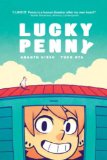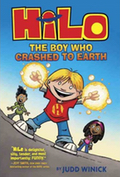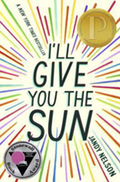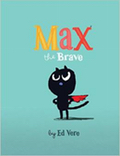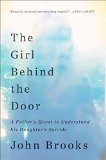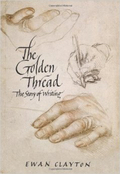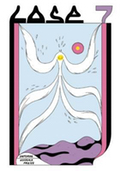Link to this review in the form of a comic strip by geneambaum tagged graphic novel • coming of age
Link to this review by geneambaum tagged graphic novel • science fiction
The only thing ten-year-old D.J. Lim was ever good at was being friends with Gina, the girl next door, who moved away three years ago. He’s pining for their friendship atop their old clubhouse when something falls from space. In the resulting crater he finds Hilo, a strange boy in silver underpants who learns English by touching D.J., but who can’t remember (at least at first) who he is or where he came from. D.J. struggles to keep Hilo a secret from his large, overachieving family. At school the next day D.J. is thrilled to see Gina, newly back in town — but their reunion is cut short when robot bugs from space start to appear. Hilo battles them, and, in the process, discovers he has powers — powers he’ll need to fight the giant robot, Obliteratron, that the bugs are assembling.
Why I picked it up: Winick’s Barry Ween, Boy Genius is one of my favorite graphic novels. I’m excited that he is drawing again.
Why I finished it: This book has a great heart. The moments of humor are endearing and entertaining, from Hilo continually using “Aaahh!” as a greeting, to his excitement at his first belch, to the way he enrolls himself in school (a raccoon is involved). Throughout the book, D.J. continues to feel like he’s not good at anything, despite evidence to the contrary from Gina and Hilo. (At the end they finally get through to him.)
Readalikes: Mark Crilley’s Akiko graphic novels, which are also full of strange alien creatures and focus on friendship.
Link to this review by darcy tagged coming of age
This is the story of fraternal twins Jude and Noah, and their relationship before and after the death of their mother. Jude and Noah take turns telling parts of the story when they’re thirteen and sixteen. Both are creative and artistic but suffer because of betrayal, lost love, and their parents’ broken relationship as they compete for a space at an esteemed art school.
Why I picked it up: I’d heard the buzz about it, but when it won the Printz Award I moved it to the top of my reading list.
Why I finished it: The book didn’t disappoint. The writing evokes the senses, as well as my emotions, and I found myself reading passages aloud to anyone who would listen. Noah, at age thirteen, narrates the time before their mother’s death, describing scenes like paintings. In the opening one, when he’s afraid he’ll be harassed by the neighborhood bullies for drawing the David statue, he imagines “Self Portrait: Funeral in the Forest.” And I was also intrigued by the crazy artist that Jude chose to work with for her school project, and the mystery of his connection to her dead mother.
It’s perfect for: Readers of John Green’s The Fault in Our Stars or Mal Peet’s Life: An Exploded Diagram will appreciate the love stories intertwined with issues like the death of a parent, homosexuality, and finding one’s way in life. Like Green and Peet, Nelson has an excellent ear for language, and the ability to make me laugh and think at the same time.
Link to this review by wally tagged picture book
Max is a brave black kitten who does not fear mice, even though he’s not sure what a mouse looks like. He asks everyone he meets if they are a mouse. When he does meet one, the mouse claims he is a monster and points Max to a monster, telling him it’s a mouse.
Why I picked it up: I’ve run across Ed Vere’s books before, and I like his simple, cartoonish style.
Why I finished it: Max follows a classic pattern of silly cats who aren’t as smart as the mice they chase, although he gets a chance to catch one at the very end when he sees the little mouse running away from him again.
Readalikes: I Want My Hat Back by Jon Klassen. There’s a moment when the bear, who is looking for his hat, overlooks the fact that the rabbit he meets is wearing it. It reminded me of when the mouse tricks Max by denying he’s a mouse.
Link to this review by flemtastic tagged coming of age • nonfiction
Unable to have a biological child, John Brooks and his wife decided to adopt a child from Poland. They brought baby Casey home to the San Francisco area and showered her with love. She could be difficult, though, and sometimes flew into a rage if she didn’t get what she wanted. They took her to counselors (a constant source of friction), but learned that if they tried to correct her behaviors, she would flip out. They had to choose between constant conflict or ignoring things like curfew and the way she treated them. There were indications of minor drug use in high school, but she had friends, a job, and was filling out college applications. Then, one morning after a fight over something trivial, like cleaning up after herself, John found a note that said the car was at the Golden Gate bridge and that she was sorry.
The book is John’s raw, soul-searching account of trying to find out why their daughter committed suicide and what his part in it was.
Why I picked it up: The premise was both heartbreaking and intriguing.
Why I finished it: John Brooks is brutally honest in describing himself. He talks of confronting his daughter about her drug use, and then having to admit that he smokes marijuana now and then. He admits that he and his wife often saw a problem brewing in their daughter’s behavior, but were often too tired to confront. One of his major conclusions is that Attachment Disorder made their daughter not trust that her parents loved her. She would sob in her room for hours at a time, possibly showing her dread of being alone.
It’s perfect for: My sister, Lora, who adopted my niece out of a bad situation. Because of her mother’s substance abuse struggles, we were not sure if she was going to have brain damage (something that Brooks also worried about). Crystal is a gorgeous, responsible, working adult, but Lora would see some of her own struggles in raising her mirrored in this book.
Link to this review by robert tagged nonfiction
Author and calligrapher Ewan Clayton was once a monk in a scriptorium. A few years after he left the monastery, he consulted at the legendary Xerox PARC during the late 1980’s rise of desktop publishing. Clayton’s experience in the range of activities we call “writing” informs this book-length exploration of the changing means of producing and consuming text. In his view, one great transition was the shift from papyrus scrolls to bound vellum and parchment codexes (in part due to the needs of traveling religious missionaries).The second was the “invention” of type-based printing in Europe by Johannes Gutenberg. (Clayton discusses earlier examples of type-based and woodcut printing in Asia which preceded Gutenberg’s work by centuries, and also reveals new research into how Gutenberg created his type casting matrices.) The third major transition is the electronic revolution we’re currently living through.
Why I picked it up: The cover illustration of a hand holding a pen caught my eye when I walked by the New Books shelf at my local library.
Why I finished it: A calligrapher by trade, Clayton often focuses on writing by hand, but he also has a profound appreciation for social developments and their effect on how we think of writing, letter forms, and materials we use to write. Our collective noun for journalistic enterprise is “the press” (a reference to printing presses), but Clayton explores journalism’s origin in murky, hand-written scandal sheets. He also writes about centuries of typeface evolution and treats email and sticky notes as forms of writing worthy of consideration. Of special interest to librarians, Clayton claims Melvil Dewey invented the hanging file folder and file cabinets, which helped everyone (not just librarians) organize the masses of paper generated by new means of production (typewriters) and new means of distribution (inexpensive postal services) of his era.
Readalikes: One of the most cited books in The Golden Thread is a personal favorite of mine: Handwriting in America: A Cultural History by Tamara Plakins Thornton. If you’d like more in-depth, and sometimes shocking, consideration of how we write and are taught to write by hand, this is your book. If you’re more interested in the history of the printed word in terms of technology and typefaces, the late Warren Chappell and Robert Bringhurst, who revised Chappell’s book, have you covered with A Short History of the Printed Word.
Link to this review by geneambaum tagged short stories • graphic novel
The three stories in the latest volume of Lose all deal with changing bodies. In the first comic, a girl transforms into a woman and plays at being her friend’s mom. In the second and longest, “Movie Star,” Kim and her ill father watch some crappy old movies together — one of which stars Gregory Tan, a man who’s the spitting image of Kim’s father and who knows nothing about his birth parents. In the third, a fluffy white boy who is also a bird meditates on what he could grow up to be, all the while pining for an ornithologist.
Why I picked it up: DeForge’s drawing style is strange, original, and frequently disturbing. His books are always worth checking out.
Why I finished it: It’s full of utterly strange, unexpected moments, from the first look at the young girl wearing a car as clothing to the Seussian bird-boy sinking into the grass as he imagines making love to the ornithologist. And I particularly loved the way “Movie Star” flowed from cinematic panel to cinematic panel using very few changes in perspective. Visually, the story mostly holds the characters at a distance, showing them as a small, almost two-dimensional part of a much larger setting. But it all works, and adds to the oddness of Kim’s father reuniting with his biological brother and the changes that result.
Readalikes: DeForge’s color choices are challenging at times, but really work with his art and resonate in his stories. The change in colors from page to page in “Movie Star” may be the best example in this book, though each shift helps express a difference in place, time, or mood. The only book I’ve seen recently that reminds me of this is Benjamin Marra’s Terror Assaulter: O.M.W.O.T. (One Man War On Terror), an action-packed pornographic romp whose color scheme made it feel like watching an old VHS tape with the color saturation turned up too high.
